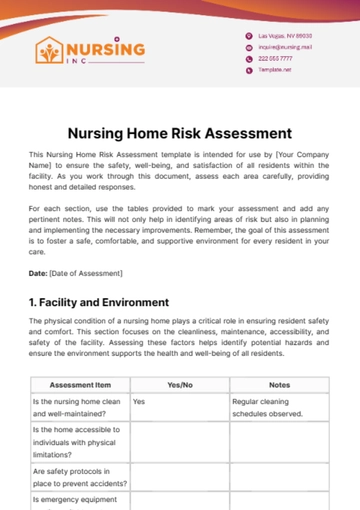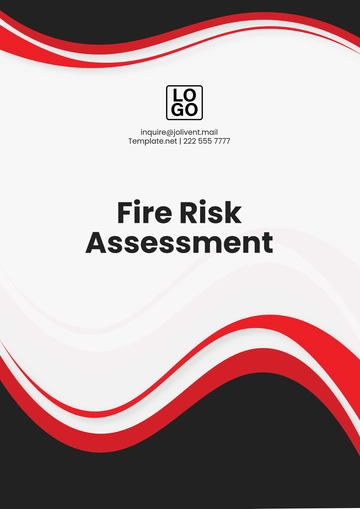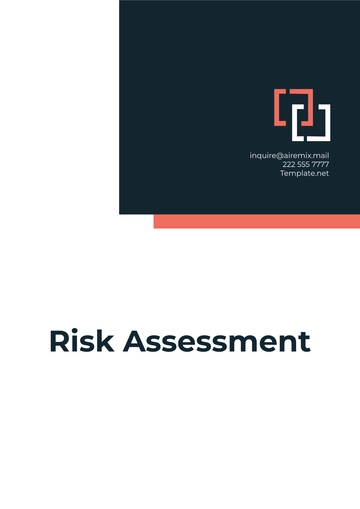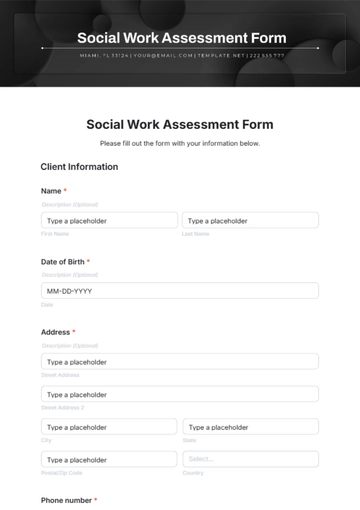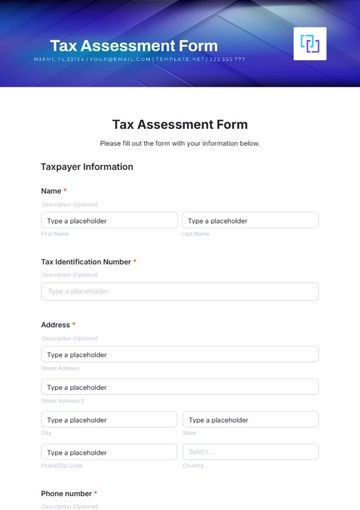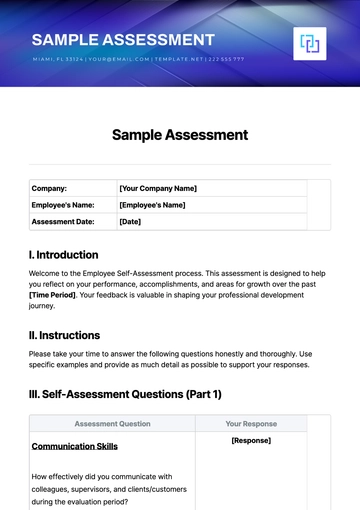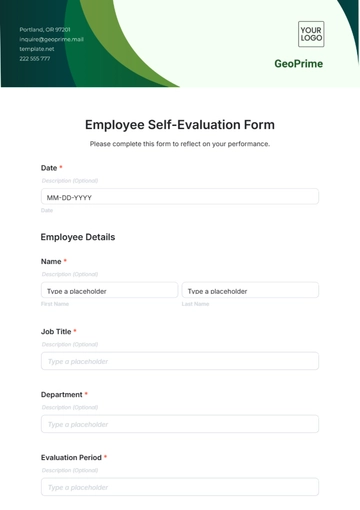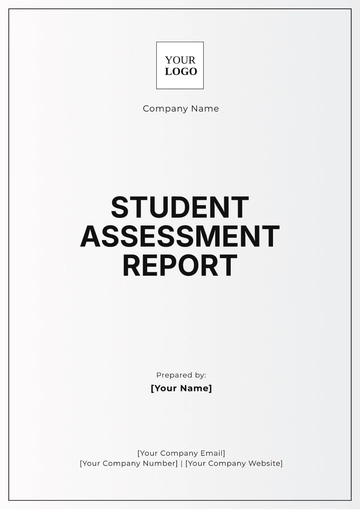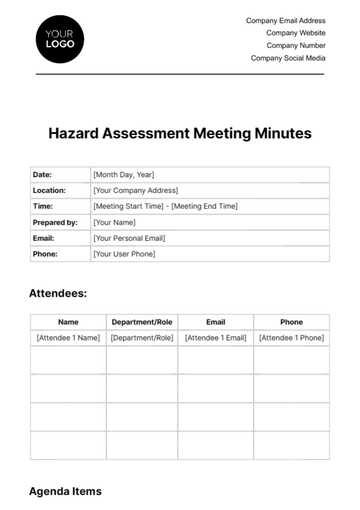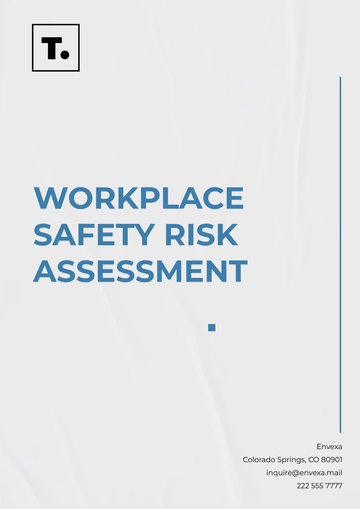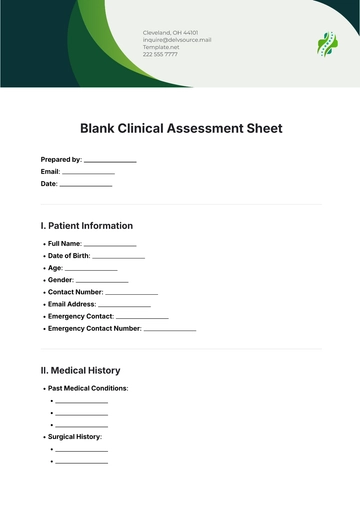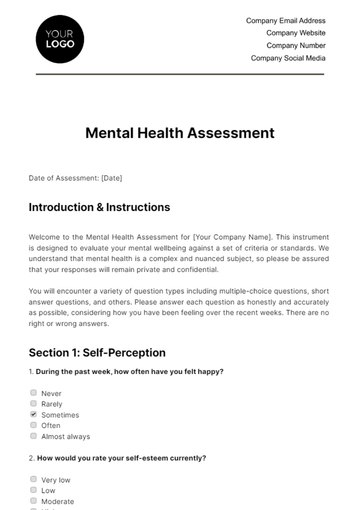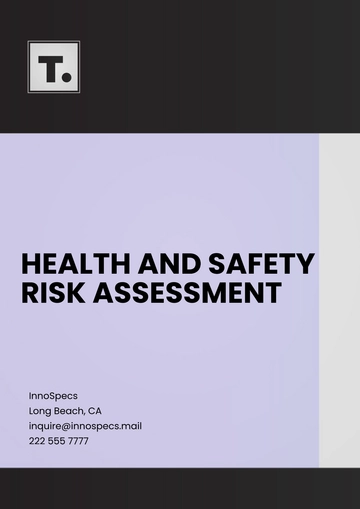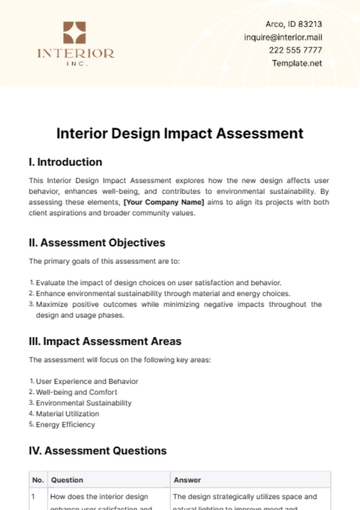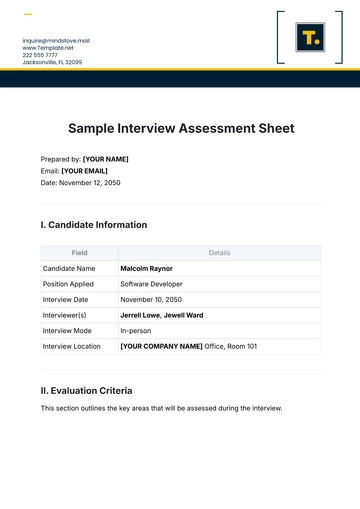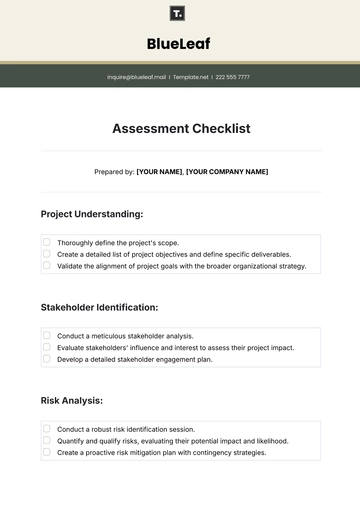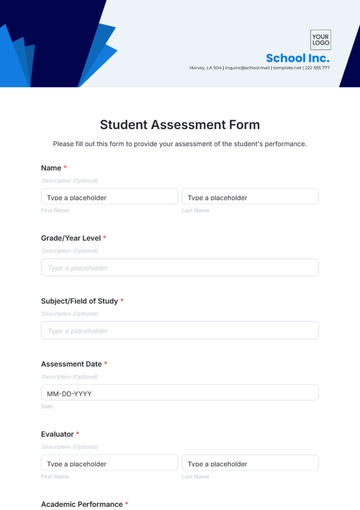Free Fire Risk Assessment Layout
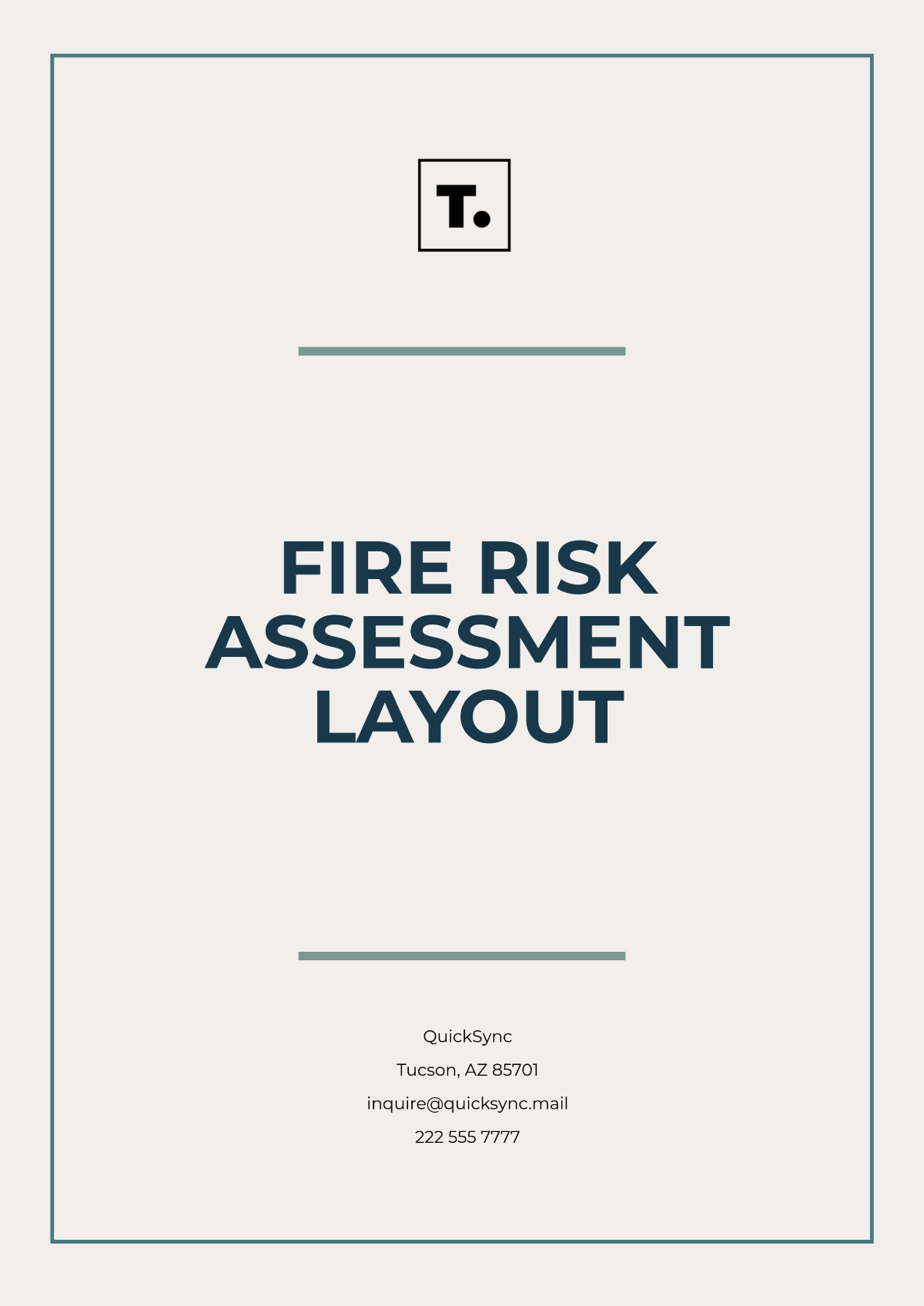
Date: June 10, 2050
Prepared by: [Your Name]
1. Introduction
Purpose of the Assessment:
Briefly outline the objectives of conducting the fire risk assessment.Scope:
Define the scope of the assessment, including the areas being assessed and the type of activities considered.Legislation & Standards:
Reference relevant fire safety legislation or standards followed (e.g., Fire Safety Order, NFPA, etc.).
2. Premises Information
Building Name & Address:
Insert Building Name & AddressType of Building:
Commercial/Residential/IndustrialOccupancy & Use:
Details of how the premises are used and the occupancy loadConstruction Details:
Materials, number of floors, etc.
3. Fire Hazards Identification
Sources of Ignition:
List sources of potential ignition in the premises, such as electrical equipment, heating systems, etc.Fuel Sources:
List materials and substances that could fuel a fire, such as flammable liquids, gases, etc.Oxygen Sources:
Ventilation and air circulation systemsPeople at Risk:
Details of people potentially at risk, including employees, visitors, and those with special needs.
4. Fire Risk Evaluation
Likelihood of a Fire Occurring:
Assess the likelihood of a fire occurring in each identified hazard area.Severity of Consequences if a Fire Occurs:
Evaluate the potential severity of consequences, including injuries, damage to property, etc.Risk Rating:
Provide a risk rating based on likelihood and severity.
5. Fire Protection Measures
Fire Detection & Alarm Systems:
Details on smoke alarms, fire detectors, and alarm systems in place.Fire Suppression Systems:
Sprinklers, extinguishers, fire hoses, etc.Escape Routes & Emergency Exits:
Details on the escape routes, emergency exits, and signage.Fire Safety Equipment & Maintenance:
List equipment like fire extinguishers, emergency lighting, etc., and how often they are checked.
6. Risk Control Measures
Elimination or Reduction of Hazards:
How identified fire hazards will be eliminated or controlled.Fire Prevention Procedures:
Outline preventative measures in place, such as safe handling of flammable materials.Training & Awareness:
Training programs for employees regarding fire safety procedures, use of equipment, etc.Personal Protective Equipment (PPE):
List any PPE provided to individuals working with fire hazards.
7. Emergency Response Plan
Emergency Procedures:
Provide the procedures in place in the event of a fire emergency.Evacuation Plans:
Outline the evacuation process, assembly points, and roles of key personnel.Emergency Contacts:
Provide contact information for fire departments, internal emergency teams, etc.
8. Action Plan & Recommendations
Immediate Actions Required:
List immediate corrective actions to be taken based on the risk assessment.Long-Term Recommendations:
Long-term actions for improving fire safety.
9. Review & Monitoring
Review Date:
Insert date for the next review or reassessment.Monitoring Plan:
How fire safety measures and actions will be monitored over time.
- 100% Customizable, free editor
- Access 1 Million+ Templates, photo’s & graphics
- Download or share as a template
- Click and replace photos, graphics, text, backgrounds
- Resize, crop, AI write & more
- Access advanced editor
Protect lives and property with Template.net’s Fire Risk Assessment Layout Template. Customizable, editable, and designed for accuracy, it ensures thorough fire risk evaluations. Use our Editable in our Ai Editor Tool to personalize it for your needs.


